Every editorial product is independently selected, though we may be compensated or receive an affiliate commission if you buy something through our links. Ratings and prices are accurate and items are in stock as of time of publication.
Modern vehicle tires are tough, standing up well to rough terrain and thousands of miles of driving. Trouble is, tires are not invincible. Every so often car tires spring leaks. Air can start leaking from anywhere on a tire, and the location of the leak determines whether or not you can fix it yourself. And if you can't fix it yourself, the location of the leak will also tell you if you need a professional repair or a new tire.
Whether or not your tire is tubed or tubeless affects things, too, because only tubeless tires can be repaired using the technique of plugging that we'll show you here. The good news is that modern vehicles always have tubeless tires, and this means that repairing with a rubber plug is often an option.
Plugging a tubeless tire is only a possibility when your puncture is in the tread area. If the air leak is where the sidewall of the tire meets the rim — this is called a "bead leak" — you'll need to visit a mechanic with a tire machine to dismount the tire from the rim and remount it with sealing liquid applied to the bead. If your sidewall has been punctured, you need a new tire, because damage there can lead to a blowout at highway speeds, even after repair.
Learn exactly how to plug a tire so next time you spring a leak between your treads, you'll be able to get up and running again in record time.
Total time completing the repair is about 15 minutes. Doing the work yourself will save you about $20 and the time spent driving to the garage and waiting.

Steve Maxwell for Family Handyman
Complete DIY projects like a pro! Sign up for our newsletter!
Do It Right, Do It Yourself!
Originally Published: August 27, 2020
Posted by Jefferson Bryant Know How
Flat tires tend to happen at the worst time in the worst places.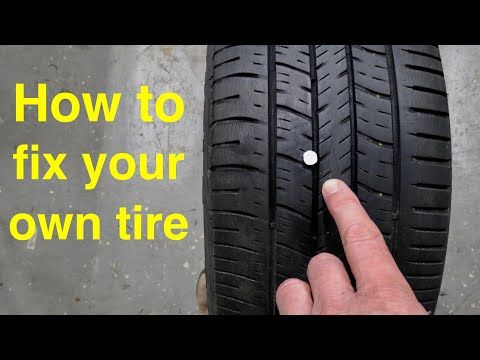 If you are on the road or outside of normal business hours when your vehicle has a flat and the spare is missing or no good, you might feel stranded, but there is an option—a tire plug kit. This is something that anybody can do, you just need the right parts.
If you are on the road or outside of normal business hours when your vehicle has a flat and the spare is missing or no good, you might feel stranded, but there is an option—a tire plug kit. This is something that anybody can do, you just need the right parts.
Liquid tire repair might get you down the road, but it could make your tire repair difficult and possibly damage the TPMS (Tire Pressure Monitor System) unit inside the rim itself depending on the formula. The best solution for an emergency tire repair is a tire plug. Made from cork and a gooey adhesive that keeps it place and seals the tire, a tire plug repair is an excellent way to get your car back on the road until you can get to a tire shop for a proper internal patch.
Installing a plug in your tire works for pierced tread area only. You cannot fix sidewall damage, compression breaks (from potholes, gravel roads or curbing) or any other type of catastrophic tire damage. The most common road hazards you will find are punctures from nails and screws.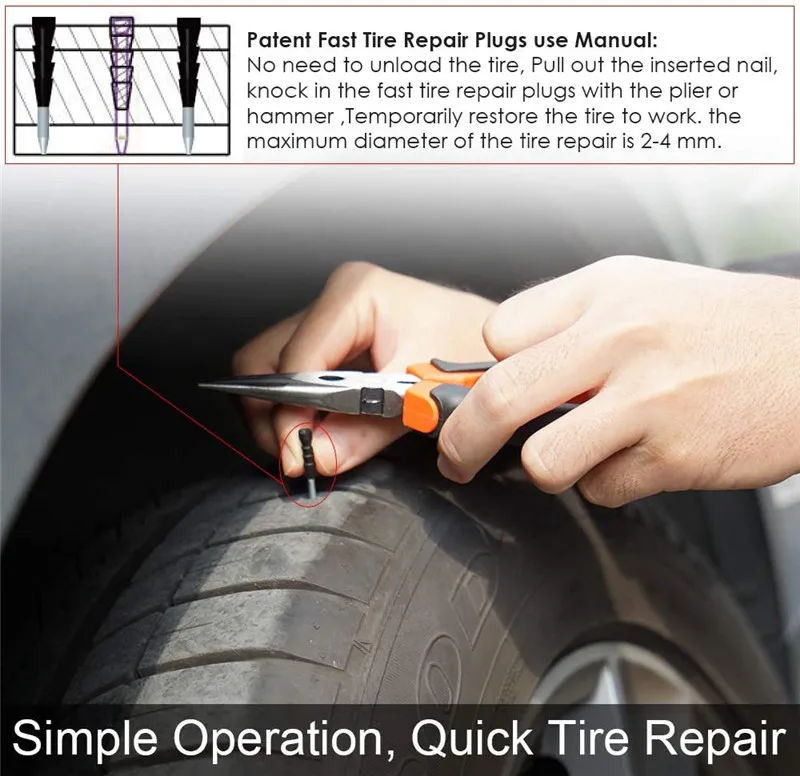 Fixing these issues are perfect for the good old fashioned tire plug. If you are wondering how long does it take to plug a tire, then the answer is just a few minutes. Most of the time is spent preparing to perform the plug itself. Here’s how to plug a tire with a plug kit.
Fixing these issues are perfect for the good old fashioned tire plug. If you are wondering how long does it take to plug a tire, then the answer is just a few minutes. Most of the time is spent preparing to perform the plug itself. Here’s how to plug a tire with a plug kit.
You will need the following to make a tire plug repair:
There are all kinds of tire plugging kits, but you want the most complete tire repair kit which comes with the plugs, the installation tool, and the reamer tool. Some flat tire repair kits just come with the plugs and installer, but the reamer tool is a necessary component to a good repair.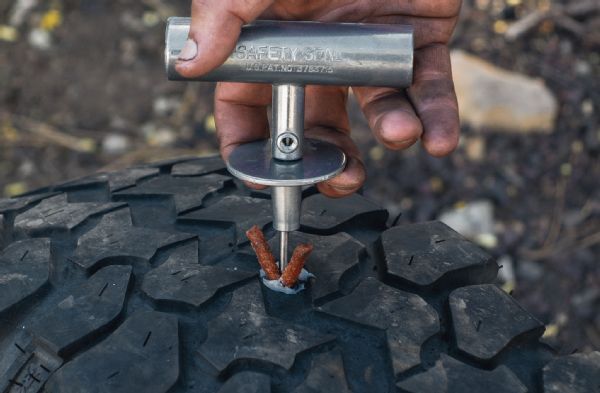 Some tire plugging kits also come with liquid cement. You can use it or not, but the cement helps make a more permanent repair.
Some tire plugging kits also come with liquid cement. You can use it or not, but the cement helps make a more permanent repair.
Locate the puncture. If you don’t see or hear the puncture, spray some soapy water on the tire and look for bubbles.
This is a small staple that was dropping tire pressure by 20 psi in about 12 hours. It needs to go.Remove the offending item. This is usually easy, but sometimes the nail or screw is worn down, making it hard to get a bite on it. This is where the side-cutters come in really handy. You will want to position the tire where you get the most leverage.
Side cutters work best for removing these items, as they can grip small round objects better than regular pliers.Insert the reamer. This will take some effort, as you have to push it through the steel belts. Use a twisting motion and push it into the tire. Once the reamer is through, saw it in and out of the tire a few times to really make a nice hole for the plug. Yes, it is counter-intuitive, but it is necessary.
Once the reamer is through, saw it in and out of the tire a few times to really make a nice hole for the plug. Yes, it is counter-intuitive, but it is necessary.
Push the reamer all the way and then saw it in and out a few times to make a clean hole.
Prep the plug and installer. Pull a plug off the strip and push it through the eyelet of the installer tool. The pliers will make this easier. Push a little through, grab it with the pliers and pull the plug halfway through the eyelet.
Pull a cork strip from the tire plugging kit and grab the installer tool, which looks like a large needle with a slit in the eye.Threading the sticky cork tire repair plug is not easy, but if you can get it squished into the hole, you should be able to pull it on through. The side cutters might help.
Insert the plug into the tire.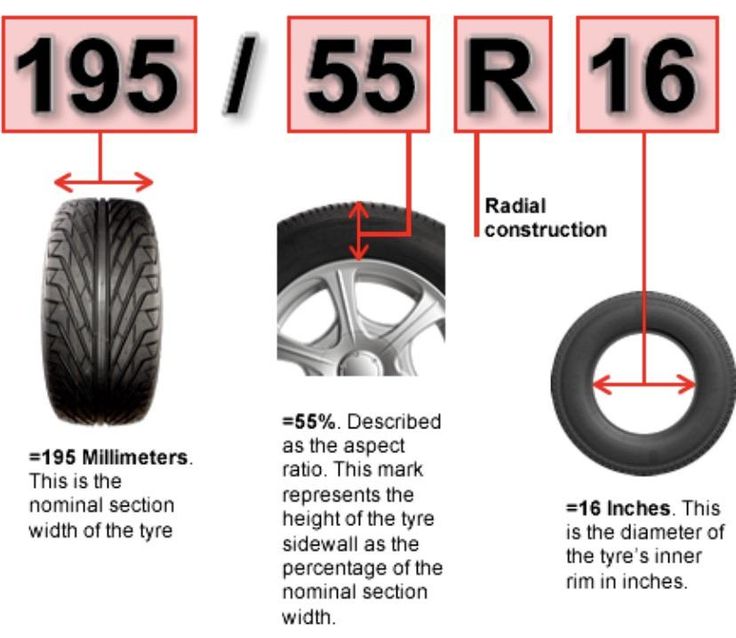 If the kit has liquid cement, apply some to the plug before inserting it into the tire. Simply push the installer into the hole in the tire until the plug is about 3/4 of the way in. Twist the installer tool 90-degrees and pull it out. The plug will stay in the tire and the tool will come out nice and easy. You may trim away the excess plug or leave it to wear away as you drive.
If the kit has liquid cement, apply some to the plug before inserting it into the tire. Simply push the installer into the hole in the tire until the plug is about 3/4 of the way in. Twist the installer tool 90-degrees and pull it out. The plug will stay in the tire and the tool will come out nice and easy. You may trim away the excess plug or leave it to wear away as you drive.
This is what you should see when the tire plug is installed.
Once the tire repair plug is in you can now twist the handle 90-degrees and pull the tool out.
Fill the tire to the proper PSI. If you have a portable air compressor, this will make things easy. However, if you do not, you need to get air very soon.
All done. You can trim the tire plug or leave. You will need air, so don’t go driving until you have the tire aired up.
Every automobile you own should have an emergency tire plug repair kit in the tool box, along with a portable air compressor. These emergency repairs are quite good, but for a long term repair, you should take the vehicle to a tire shop for a proper repair as soon as possible. They will know the best way to patch a tire for your type of damage.
Check out all the steering & suspension parts
Categories
Know How
Tags
emergency repair, flat tire, flat tire repair, patch flat tires, sealant, tire maintenance, tire plug kit, tire pressure, tire safety, tire wear, tires, wheels
A life-long gearhead, Jefferson Bryant spends more time in the shop than anywhere else. His career began in the car audio industry as a shop manager, eventually working his way into a position at Rockford Fosgate as a product designer.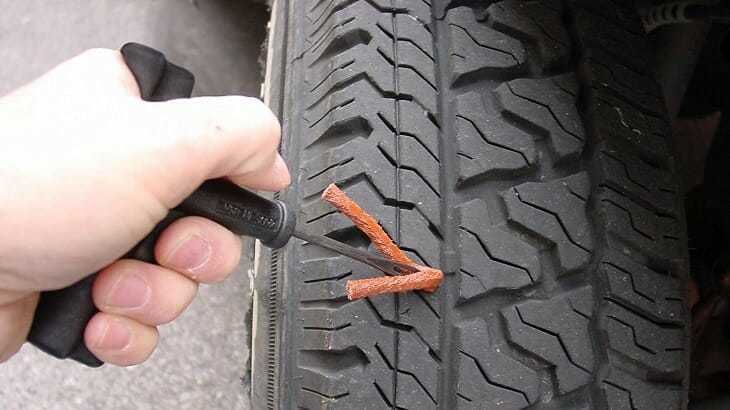 In 2003, he began writing tech articles for magazines, and has been working as an automotive journalist ever since. His work has been featured in Car Craft, Hot Rod, Rod & Custom, Truckin’, Mopar Muscle, and many more. Jefferson has also written 4 books and produced countless videos. Jefferson operates Red Dirt Rodz, his personal garage studio, where all of his magazine articles and tech videos are produced.
In 2003, he began writing tech articles for magazines, and has been working as an automotive journalist ever since. His work has been featured in Car Craft, Hot Rod, Rod & Custom, Truckin’, Mopar Muscle, and many more. Jefferson has also written 4 books and produced countless videos. Jefferson operates Red Dirt Rodz, his personal garage studio, where all of his magazine articles and tech videos are produced.
Thursday, April 21, 2016 16:10:19 Europe/Moscow
One of the most frequently asked questions among buyers at the tire center is which axle should I put new tires on? The answer is simple: new tires are always installed on the rear axle of the car, regardless of the drive.
There is a particularly treacherous surface for a tire in the summer - a flooded road, asphalt hidden under a film of water. Sometimes the thickness of this film is not even visible to the eye. nine0003
Sometimes the thickness of this film is not even visible to the eye. nine0003
It is water that significantly impairs the behavior of the tire. When there is a lot of water, it is able to create a water wedge that separates the tire from the surface. For traction in such conditions, many years ago, the tire tread was indented with a network of drainage channels, and the tire received a tread pattern as a result. Numerous drainage channels of various sizes and directions endowed the tire with a negative profile, which has a three-dimensional structure and is able to reduce the negative impact of water. nine0003
The more worn the tires are, the less water the tire can carry out of the contact patch and the faster it will lose traction on the road.
Option 1. New tires installed on the front axle
Only the appearance of the car benefits from such an installation, which in the parking lot, with the wheels turned out, can attract additional attention with a new tread. There will be no problem using tires in this way ... until the first rain. nine0021
There will be no problem using tires in this way ... until the first rain. nine0021
Compare:
Front axle:
the more difficult it is to pass without consequences).
Rear axle:
Lack of good drainage system due to more worn tread.
No additional driver control.
No additional engine load.
The rear axle will go out of control instantly, and it does not need a downpour, a small film of water on the pavement will be enough.
The electronic systems of the car will not be able to stabilize it - physically there is not enough contact area between the tire and the road. As a result, there will be a loss of control over the car due to a rear axle skid, which few drivers can handle. nine0003
Option 2: New tires installed on the rear axle
If the front axle is equipped with tires with a lot of wear, the driver will immediately feel problems with traction and take measures: reduce speed or correct steering behavior. And, of course, it's hard to imagine a road covered in water that a front axle with worn tread can go through, but on which a rear axle with newer tires will lose traction.
And, of course, it's hard to imagine a road covered in water that a front axle with worn tread can go through, but on which a rear axle with newer tires will lose traction.
New tires (if you buy two tires), you need to install only on the rear axle , regardless of the vehicle's drive and its technical equipment.
Note that this is a simulated situation where vehicle speed, tire tread depth and water film thickness are already grouped for the negative scenario. But no one will be able to name the framework that you need to adhere to, since one of the criteria - the tread depth - is constantly decreasing. Don't wait for factors (speed, water, tire) to come together in a dangerous combination. Install tires with a deeper tread pattern on the rear axle. nine0003
Most often, tooth mobility occurs due to periodontitis, less often due to trauma.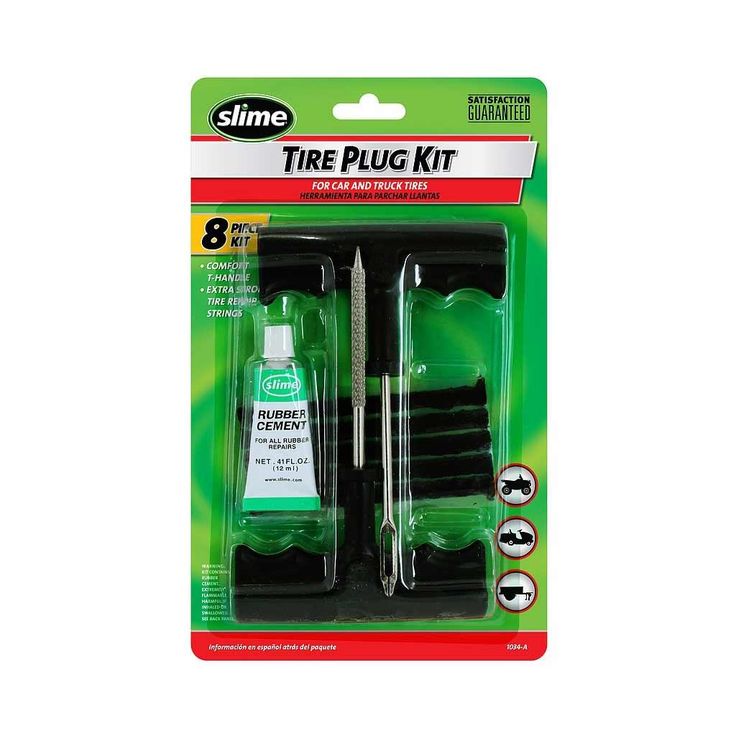 But whatever the cause of the problem, it can and should be dealt with. And the sooner the patient turns to the dentist, the better. Procrastination leads to fanning or crowding of the teeth, and then to their loss. In some cases, splinting is performed to strengthen mobile teeth.
But whatever the cause of the problem, it can and should be dealt with. And the sooner the patient turns to the dentist, the better. Procrastination leads to fanning or crowding of the teeth, and then to their loss. In some cases, splinting is performed to strengthen mobile teeth.
Khashchenko Stanislav Sergeevich - periodontist at the Dentoclass clinic. nine0003
In dental practice, splinting is a procedure during which several teeth or the entire dentition are held together. The tire is a thin strip made of aramid yarn, silk, polyethylene, etc. Also, fiberglass is increasingly being used for this. This material has high strength. And last but not least, it is hardly noticeable in the mouth. Thus, the aesthetics of the smile does not suffer, even if splinting was carried out from the outside. nine0003
At the preparatory stage, the surface of the mobile teeth is processed, then a splint is applied to it and a light-cured composite is applied on top. Splinted teeth are firmly bonded to each other, so they are immobile. In this case, the chewing load is evenly distributed between them.
Splinted teeth are firmly bonded to each other, so they are immobile. In this case, the chewing load is evenly distributed between them.
It is important to note that the technology of the procedure depends on which teeth need to be fastened:
Splinting is prescribed both for severe tooth mobility and as a preventive measure when there is a high risk of destructive changes. For example, the procedure is indicated in the following cases:

The splint eliminates pathological tooth mobility. However, although this is the main, but not the only problem solved with the help of splinting. In addition, the tire redistributes the chewing load - if the patient bites off something with moving teeth, then the load will be distributed between all the teeth in the tire.
It is worth noting the aesthetic value of the procedure. Changing the position of the teeth due to pathological mobility reduces the attractiveness of the smile. As a result, people experience psychological discomfort, become shy and withdrawn. With the help of splinting, this problem is also solved. nine0003
The lower anterior teeth are splinted from the inside.
Depending on the duration of exposure, splinting can be:
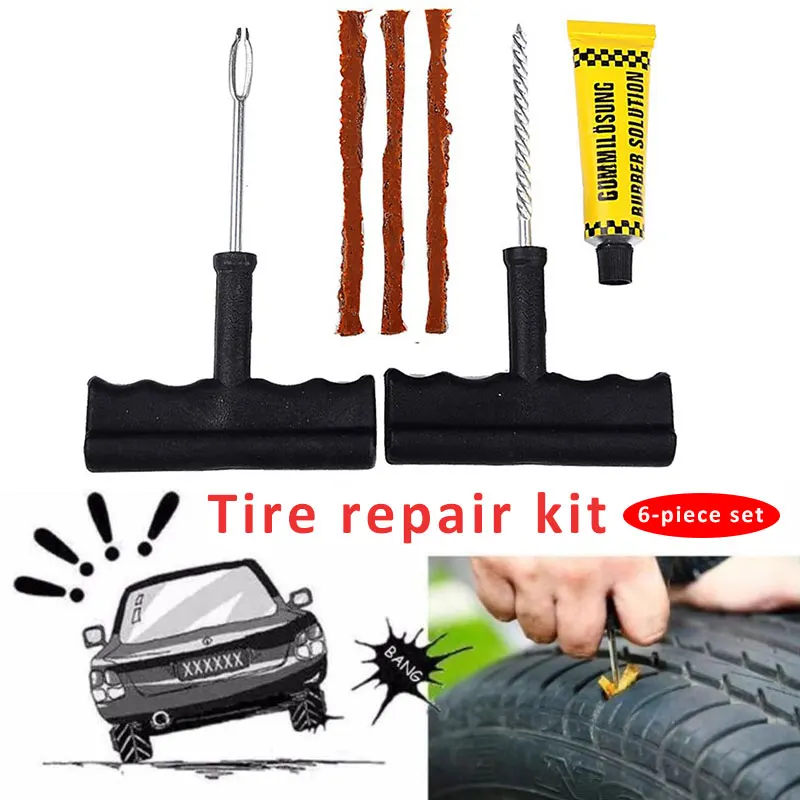 A distinctive feature of the procedure is minimal trauma to healthy tooth tissues. nine0050
A distinctive feature of the procedure is minimal trauma to healthy tooth tissues. nine0050 It is important to note that splinting also differs in the type of materials used.
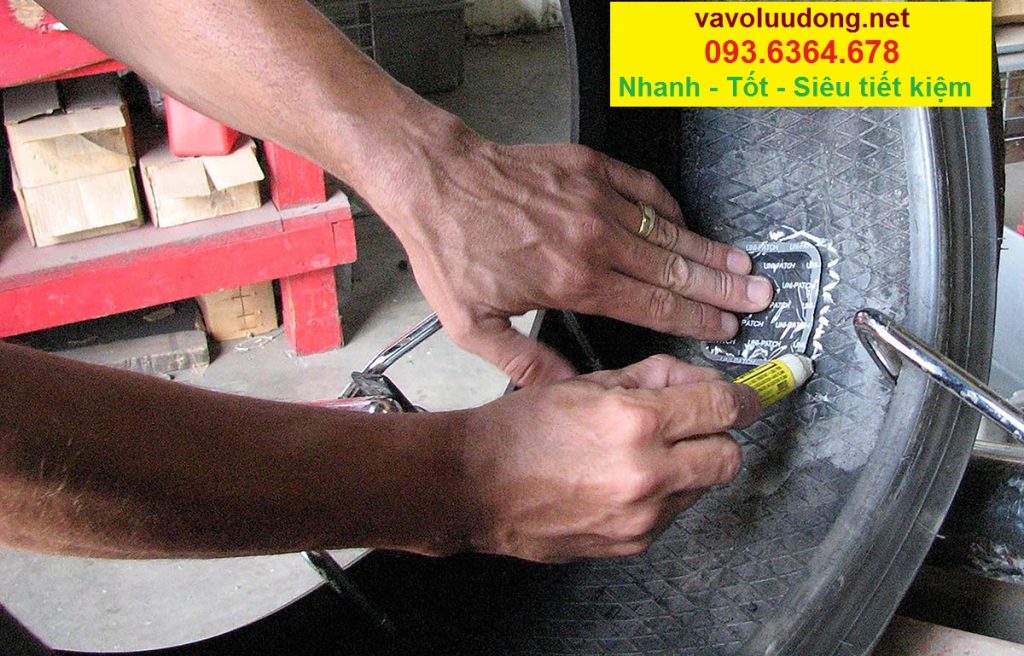 It is also worth noting the aesthetics of the design. nine0050
It is also worth noting the aesthetics of the design. nine0050 In addition, in some cases, splinting is performed using orthopedic structures: bridges or clasp prostheses.
The choice of method for treating pathological tooth mobility depends on the severity of destructive changes, the integrity of the dentition and a number of other factors. Therefore, it is impossible to say which is better - fiberglass, aramid thread or an orthopedic prosthesis. The optimal solution is selected individually for each patient. In this case, it is advisable to listen to the opinion of the dentist and choose the option that the doctor will offer.